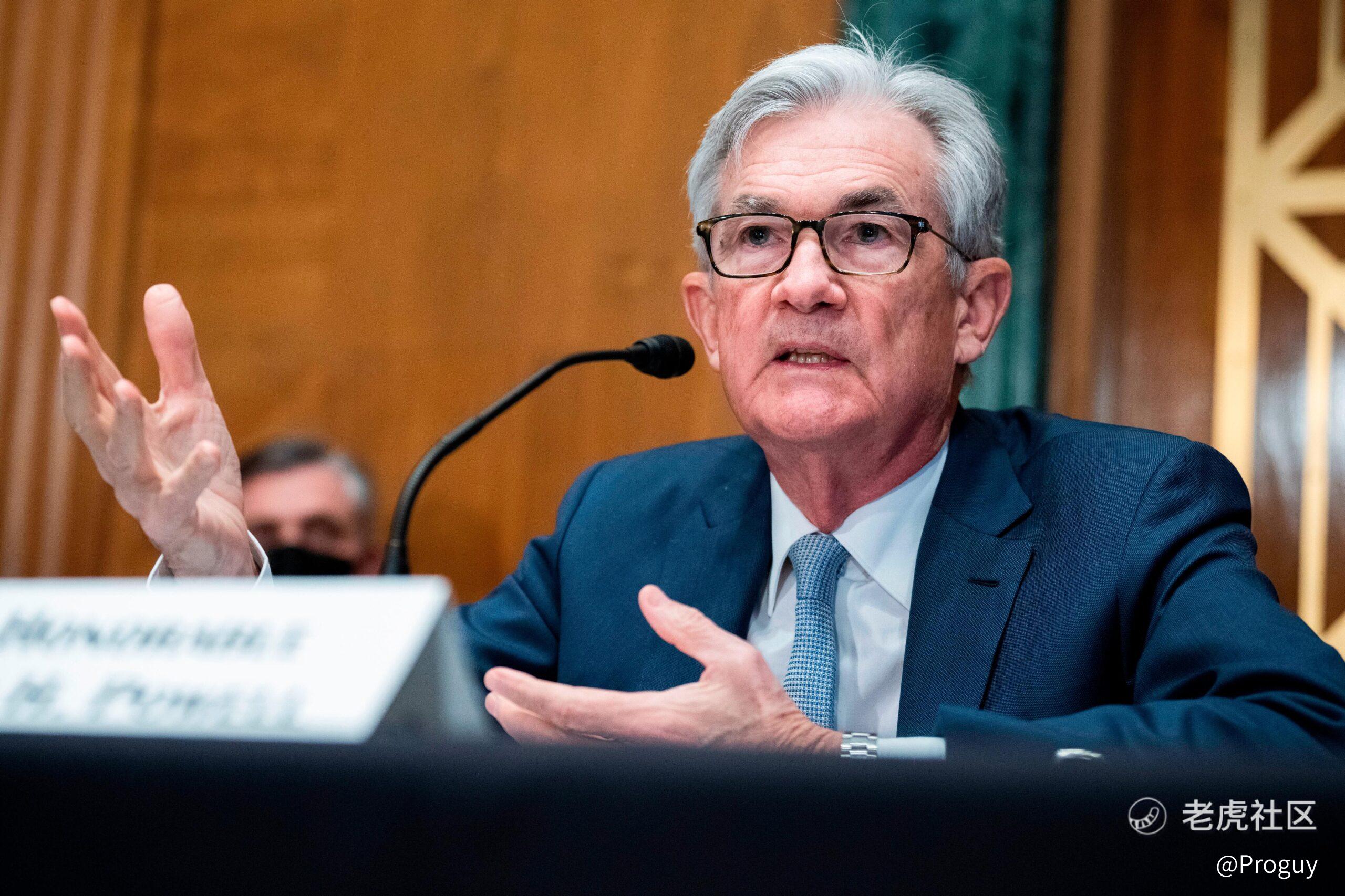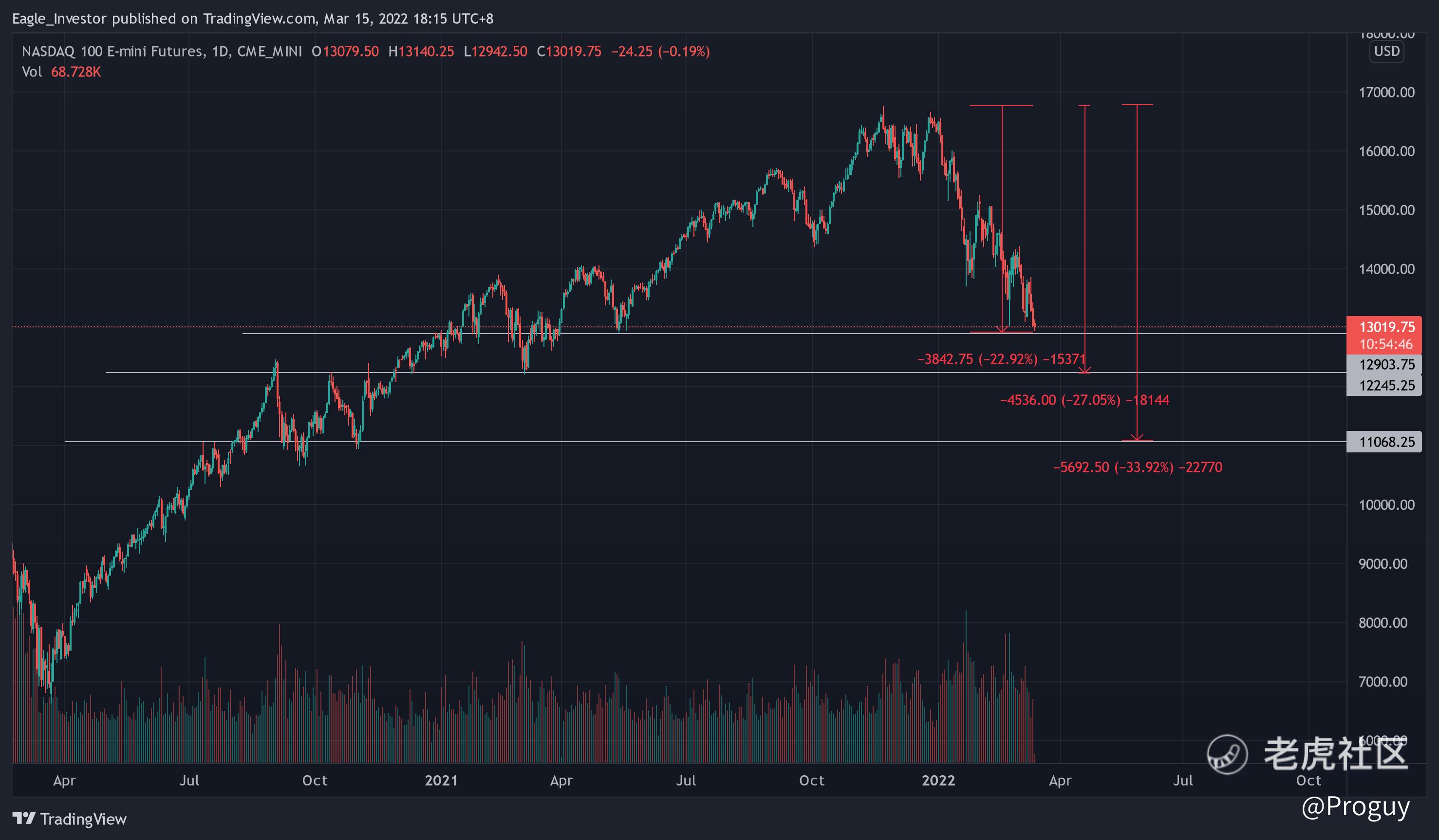US market report 15/3/2022: Chaos Before The FOMC Storm

All eyes are on the Fed as Jerome Powell and co. convene at the FOMC meeting on 15-16th March to review current economic and financial conditions, determine an appropriate stance on monetary policy and assess the risks to its long-run goals of price stability and sustainable economic growth. According to reports, this FOMC meeting spells the end to quantitative easing as the Fed shifts its focus to mitigating the deleterious effects of inflation by raising interest rates. Last week's CPI reading climbed to a 40-year high of 7.9%, as oil prices skyrocketed above $100 per barrel. The Fed is expected to raise interest rates by 25bps this meeting and conduct a total of seven rate hikes this year according to analysts.
As the Fed The Fed does not like to surprise the market, it will almost certainly raise interest rates by 25bps, in line with forecasts. Investors would therefore be watching the Fed's tone on inflation to receive hints on how the upcoming rate hikes will be conducted. Fed Chair Powell faces a precarious balancing act of not appearing too hawkish while convincing audiences that the Fed remains in control of inflation. A hawkish tone could send the prices of stocks, especially risk assets lower on concerns of more interest rate hikes coming this year. The Fed is also expected to share its outlook on inflation and the economy during the meeting. Economists project inflation forecasts to be bumped up to 4% from 2.7% this year. GDP growth is also expected to have decelerated due to Russia's invasion of Ukraine and is unlikely to be able to hit growth forecasts of 4% this year.
Implications on the Market

In my previous article, I commented that the $E-mini Nasdaq 100 - main 2206(NQmain)$ could fall lower in the short term on fears of sky-high inflation. Currently, the Nasdaq Futures daily chart shows the index is currently sitting at a level of support at 13,000 and has just entered bear market territory, falling 22% from its peak. Nasdaq bulls will be trying to hold on to that level while bears will be looking to push below that level of support. Should bulls fail to hold support, the next support levels are at 12,240 and 11,000 respectively. These levels represent 27% and 34% peak drawdowns respectively, pushing the index further into bear market territory. Since 1987, the Nasdaq 100 has suffered 7 bear markets and fell 42% on average during these 7 events.
Food For Thought
Will the Fed be able to bail out the markets as they did in 2020? Or will the markets continue to tumble in the wake of sky-high inflation and the probability of a recession? I have a feeling that the current economic situation is a much tougher environment for stocks than the Covid market crash and it could take a while for prices to recover to 2021 levels.
For investors trading during this period of high volatility, proper risk management including the use of stop-losses and position sizing should be exercised as a form of caution.
精彩评论